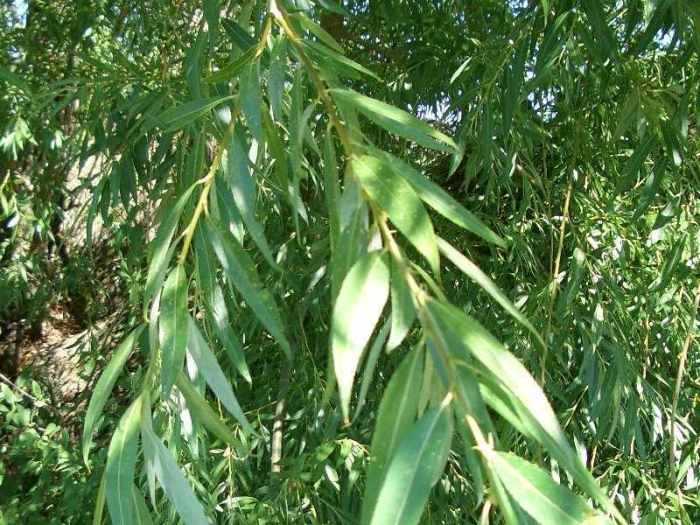Corkscrew Willow
(Salix matsudana)
Corkscrew Willow (Salix matsudana)
/
/

© Peter Chen 2.0
CC BY 4.0
Image By:
© Peter Chen 2.0
Recorded By:
Copyright:
CC BY 4.0
Copyright Notice:
Photo by: © Peter Chen 2.0 | License Type: CC BY 4.0 | License URL: http://creativecommons.org/licenses/by/4.0/ | Uploader: peterwchen | Publisher: iNaturalist |


















































Estimated Native Range
Summary
Salix matsudana, commonly known as Corkscrew Willow or Chinese Willow, is a deciduous tree native to northern and western China, as well as parts of Korea. It is closely related to Salix babylonica (Weeping Willow) but is distinguished by its more upright growth habit and the presence of cultivars with strikingly twisted branches, such as Salix matsudana ‘Tortuosa’. It typically reaches a height of 30-40 feet and features narrow, lance-shaped leaves that emerge bright green before turning golden-yellow in the fall. It is commonly found in riparian zones and moist lowlands, where it thrives in well-drained soils with consistent moisture.
Corkscrew Willow is widely cultivated for its rapid growth, unique branching structure, and ornamental appeal in gardens and landscapes. It is frequently planted along water bodies for erosion control and is used in windbreaks due to its ability to tolerate a variety of soil conditions. The tree prefers full sun and benefits from regular watering, especially in dry climates. However, it is susceptible to pests and diseases such as willow blight and aphids, and its vigorous root system can pose risks to nearby infrastructure.CC BY-SA 4.0
Corkscrew Willow is widely cultivated for its rapid growth, unique branching structure, and ornamental appeal in gardens and landscapes. It is frequently planted along water bodies for erosion control and is used in windbreaks due to its ability to tolerate a variety of soil conditions. The tree prefers full sun and benefits from regular watering, especially in dry climates. However, it is susceptible to pests and diseases such as willow blight and aphids, and its vigorous root system can pose risks to nearby infrastructure.CC BY-SA 4.0
Plant Description
- Plant Type: Tree
- Height: 30-40 feet
- Width: 30-40 feet
- Growth Rate: Rapid
- Flower Color: N/A
- Flowering Season: Spring
- Leaf Retention: Deciduous
Growth Requirements
- Sun: Full Sun
- Water: High
- Drainage: Medium, Slow
Common Uses
Erosion Control, Water Garden
Natural Habitat
Originally from the dry regions of northern China and often found in riparian zones
Other Names
Common Names: Chinese Willow , Peking Willow , Curly Willow , Hankow Willow
Scientific Names: Salix matsudana , Salix babylonica f. tortuosa , Salix babylonica f. tortuosa , Salix babylonica var. matsudana , Salix matsudana f. lobatoglandulosa , Salix matsudana f. pendula , Salix matsudana f. rubriflora , Salix matsudana f. tortuosa , Salix matsudana f. umbraculifera , Salix matsudana var. anshanensis
GBIF Accepted Name: